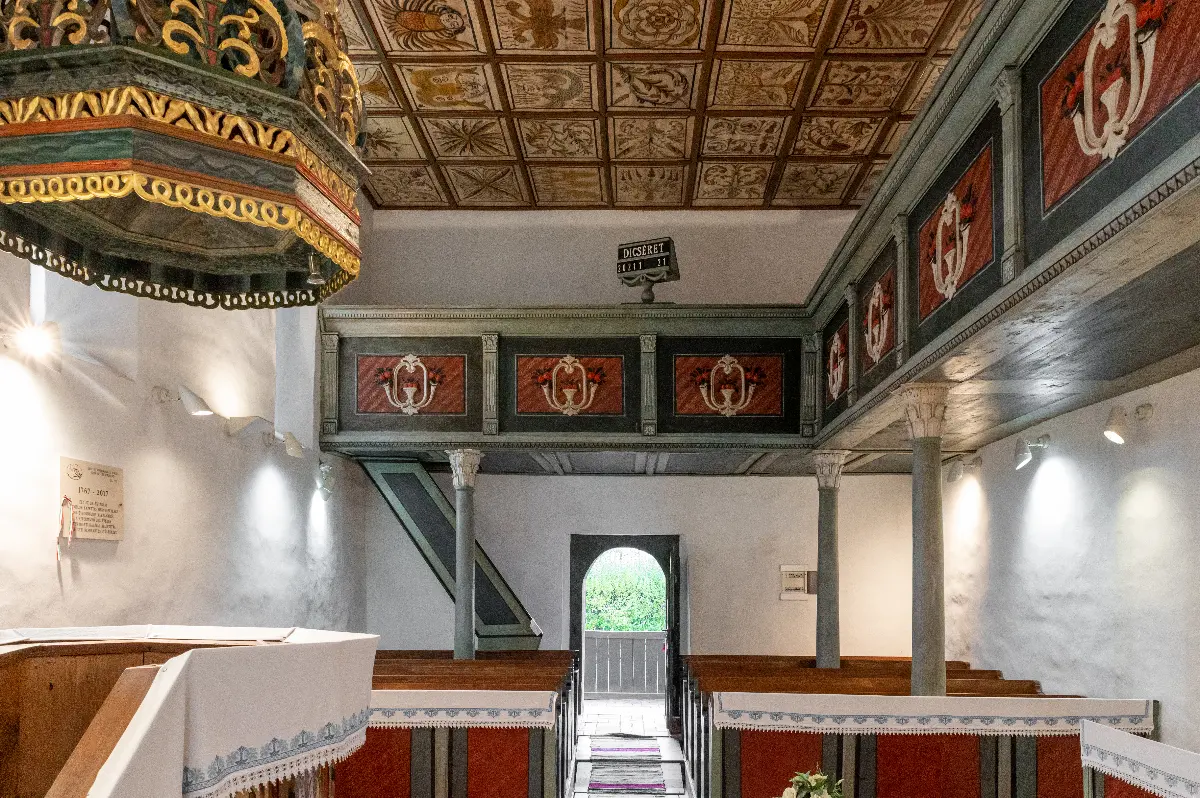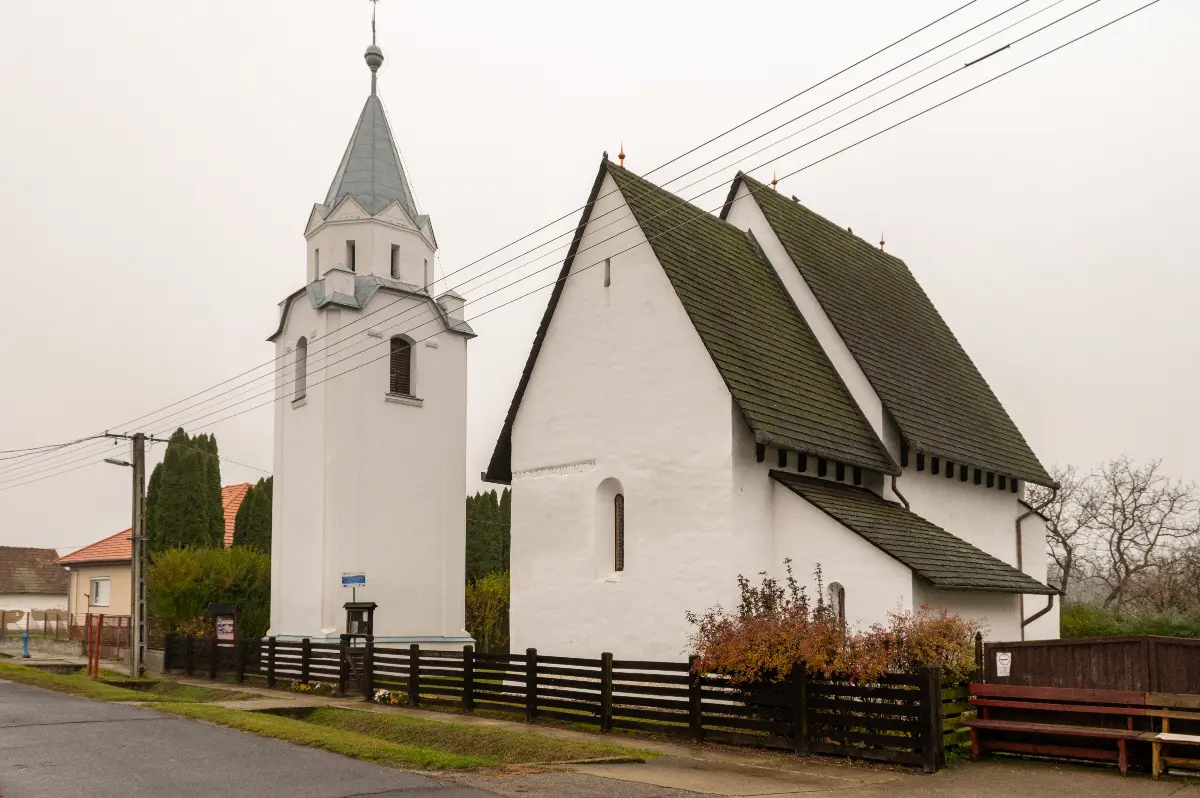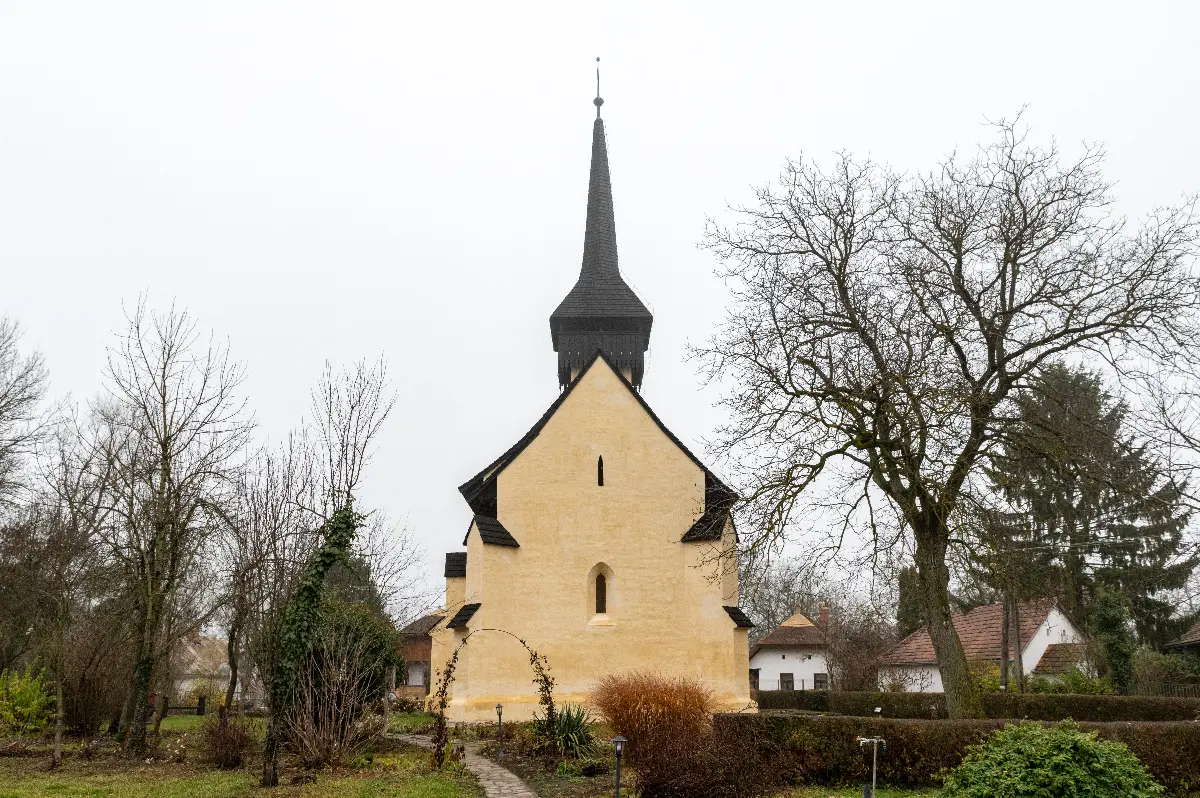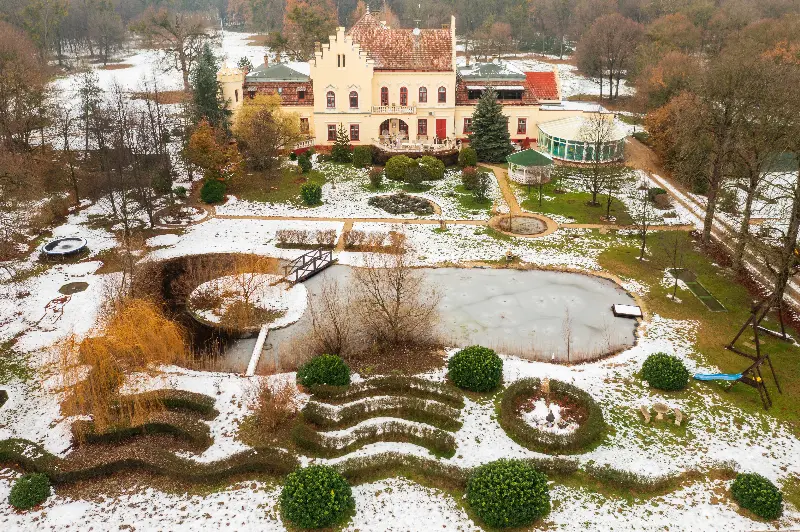
Helyszín címkék:
Smiling saints, medieval churches
Méhész Zsuzsa
Smiling saints
The church in Csaroda is famous for its smiling saints and intact interior decoration. And for the fact that it was built in the early 14th century, making it one of the earliest preserved churches in Hungary. Still in use today, Reformed worships are held here. However, the main idea of the Reformation had not been even born in 1311, when the church was first mentioned. It was built following the style and requirements of the Romanian period, with thick walls and small, loophole-like windows. Its interior is richly painted, with the earliest frescoes on the walls dating from the late 1300s. Among them, the most extraordinary were the two martyrs, the smiling, cheerful Saints Cosmas and Damian, due to several reasons: first, if they knew what fate awaited them, they might not have felt like smiling. Secondly, the depiction was created in Byzantine times, which was anything but light and cheerful. They are joined by several biblical figures: the patron saintof travellers and merchants, Saint Christopher. Furthermore, apostles, saints and medieval scenes were also depicted here. They were preserved as the local landlord converted to the Reformed faith in the late 1500s; and with him the church and the people of the village as well. The frescoes were whitewashed and the decoration was removed. They only turned up accidentally in the seventies, during the restoration of the church. Today, Csaroda is the most glittering jewel of the Route of Medieval Churches.
Szamostatárfalva

It is not a good omen that the word “tatár”, meaning Mongols, appears in the name of the settlement, as they almost completely destroyed the area in the 13th century. And, unfortunately, they were also here too... In anycase, the village of Szamostatárfalva, which already existed at the end of the 1100s, survived the Mongolian invasion. There is no record of the exact date of construction of the church, but researchers believe that it bears the hallmarks of the 13th century. On the brick wall near the entrance you can see many cut marks: legend has it that the people fighting against the Mongols or the Mongols themselves left their sword marks there, while others say that before the harvest the reapers used to pay their respects here in order to receive blessings in the hope of a good harvest.
Still in use

The community of the church converted to the Reformed faith in the 16th century, as did almost all the settlements in the area, and a button and a star were placed on the church roof. As the church has no tower. Its bell, cast in 1650, is strung in the wood-shingled belfry located next to the church. It is apparently simple and undecorated: its unplastered exterior brickwork is made interesting by the rhythmically repeating, darker burnt bricks. The small village of 300 people still use it. The church has a clean interior, with whitewashed walls and blue furnishings that suggest cleanliness and simplicity.
The Route of Medieval Churches

Both churches are part of a thematic route linking the historic churches of the Felső-Tiszavidék region and beyond. The history of 37 churches in Hungary, 15 in Transcarpathia and 13 in Satu Mare County in Romania has been researched and made accessible to visitors. The programme aims to raise awareness of therich medieval church heritage of the region. With the decline in the number of believers (and the population of the villages), it was feared that the role of these semi-unknown treasures would fade. The Route of Medieval Churches not only highlights these values, but has also contributed to their restoration and accessibility for visitors. They are not permanently open, so if you are planning to visit, it is recommended tophone in advance so that the church key keeper can open the door in time for you. Detailed information can be found on the very thorough website of the thematic road: The Route of Medieval Churches.











